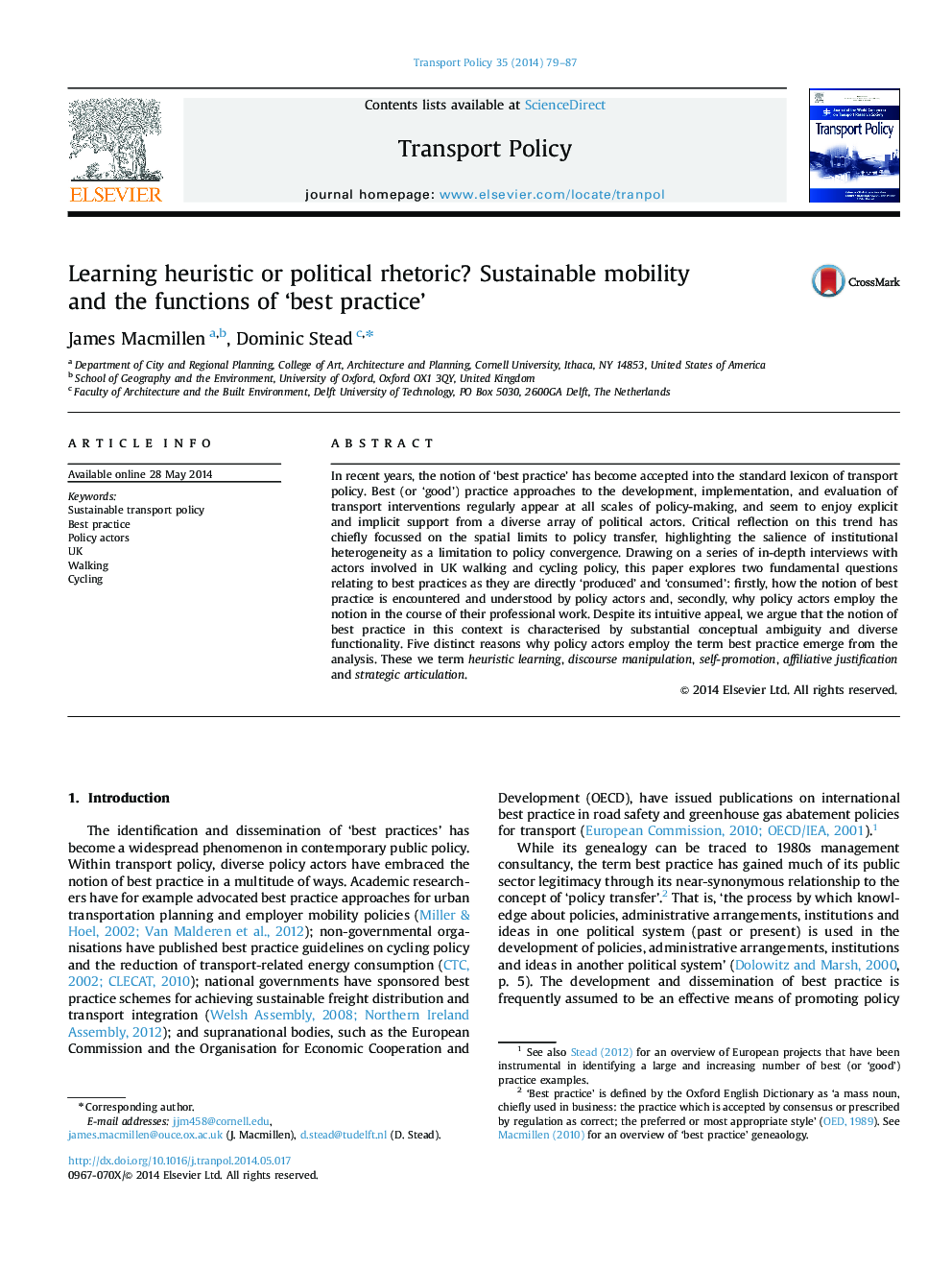| Article ID | Journal | Published Year | Pages | File Type |
|---|---|---|---|---|
| 1064861 | Transport Policy | 2014 | 9 Pages |
•Notions of best practice are endemic in the sustainable transport policy community.•A diverse array of experiences and understandings of ‘best practice’ exist.•Different actors have different reasons for employing best practices.•Reasons include heuristic learning, discourse manipulation and self promotion.•Other reasons include affiliative justification and strategic articulation.
In recent years, the notion of ‘best practice’ has become accepted into the standard lexicon of transport policy. Best (or ‘good’) practice approaches to the development, implementation, and evaluation of transport interventions regularly appear at all scales of policy-making, and seem to enjoy explicit and implicit support from a diverse array of political actors. Critical reflection on this trend has chiefly focussed on the spatial limits to policy transfer, highlighting the salience of institutional heterogeneity as a limitation to policy convergence. Drawing on a series of in-depth interviews with actors involved in UK walking and cycling policy, this paper explores two fundamental questions relating to best practices as they are directly ‘produced’ and ‘consumed’: firstly, how the notion of best practice is encountered and understood by policy actors and, secondly, why policy actors employ the notion in the course of their professional work. Despite its intuitive appeal, we argue that the notion of best practice in this context is characterised by substantial conceptual ambiguity and diverse functionality. Five distinct reasons why policy actors employ the term best practice emerge from the analysis. These we term heuristic learning, discourse manipulation, self-promotion, affiliative justification and strategic articulation.
